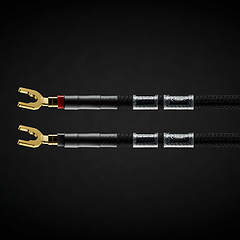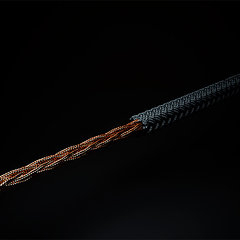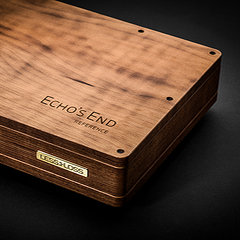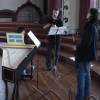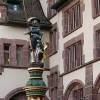 Bach Sonatas in St. Martin's ChurchTrack price: FREEJohann Sebastian Bach: BWV 1034 e-moll Sonate für Flöte und Basso Continuo
Johann Sebastian Bach: BWV 1035 E-dur Sonate für Flöte und Basso Continuo
Two Bach Sonatas (Flute, Bassoon, Harpsichord) recorded in the exceptional acoustic sanctuary of St. Martin's Church in Basel, Switzerland.
The musicians and their instruments:Flute: Vytautas Sriubikis Vytautas plays a wooden Otto Moennig flute, model name Orthoton, made in 1938 in Leipzig, Germany. Headjoint is made by J. R. Lafin, 14K gold. Bassoon: Povilas BingelisPovilas plays a Yamaha 812. Manufactured in 2003 in Japan. Harpsichord: María González CalvoMaría plays a one keyboard Cembalo Franco Flamenco, built according to the ravalement Ruckers system in Spain. 61 keys, 226 cm x 94 cm. 2 x 8'. This harpsichord also features a beautiful lute tembre, which was used for part III, Andante, of the E-Minor Sonata. The contrast in tembre is striking, and the listener is reminded that no adjustments to microphone placement or other settings were made at any time throughout the recording session. Snapshots taken during the recording sessionFREE 24 BIT / 96 kHz sample At one point in the session I captured this segment of flautist Vytautas Sriubikis playing his wooden Bansuri flute. This is the original 24 bit / 96 kHz full resolution file and you can download it here [38MB]. Here's an MP3 of it [2 MB]. About the recording session:At the west end of the Minster Hill, in a square with a fountain, stands St Martin's church (consecrated 1398), the oldest parish church in Basel. In Martinsgasse, which runs parallel to the Rheinsprung on the side away from the river, are two very elegant patrician houses, the Blaues Haus (Blue House) and Weisses Haus (White House), built between 1763 and 1770 for wealthy silk-merchants. At the west end of the Minster Hill, in a square with a fountain, stands St Martin's church (consecrated 1398), the oldest parish church in Basle. It is in this beautiful church that we recorded the Bach Sonatas for Flute and Basso Continuo. You will hear at the very end of the E-Minor Sonata, in the reverb tail, a sort of thundery drumming sound with the clatter of tambourines. This was part of Basel's warming up for their upcoming Carnival Days, a huge tradition there. In the protestant city of Basel, the carnival days in February or March mark the end of the fasting season. It all begins on Monday morning at four o'clock: All lights are turned off, only the big lanterns of the carnival groups illuminate the dark. The city is shaking with the sound of drums and pipes, thousands of spectators stay up late, dozens of cellars in the old city centre are turned into cosy bars. In 2009, carnival was on the 2nd to 4th of March. The origins of CarnivalCarnival marks the end of the protestant fasting season. It takes place six weeks before easter, a week after carnival in most catholic regions. This is due to a reform of the papal calendar in the 16th century, which protestant Basel duly ignored. Other than that, all religious holidays in Basel are on the same date as everywhere else, and makes predictable recording sessions much easier! Special thanks to Frau Hill, superintendent of St. Martin's Church in Basel. |
- Products
- Power Cables
-
 C-MARC™ Prime
The must have foundation for any sound system today.
From
$
486
C-MARC™ Prime
The must have foundation for any sound system today.
From
$
486
-
 C-MARC™ Classic
The unique super-cable power cord everyone's talking about.
From
$
1148
C-MARC™ Classic
The unique super-cable power cord everyone's talking about.
From
$
1148
-
 C-MARC™ Classic Entropic Process
The peerless, advanced Classic masterpiece.
From
$
1934
C-MARC™ Classic Entropic Process
The peerless, advanced Classic masterpiece.
From
$
1934
-
 C-MARC™ Stellar Entropic Process
The crown jewel for highest performance power connection.
From
$
2450
C-MARC™ Stellar Entropic Process
The crown jewel for highest performance power connection.
From
$
2450
-
- Loudspeaker Cables
- Interconnect Cables
-
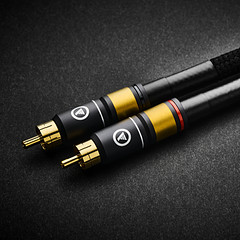 RCA C-MARC™
Cotton-clad true Litz • Whopping 2.3mm2 polarities
From
$
850
RCA C-MARC™
Cotton-clad true Litz • Whopping 2.3mm2 polarities
From
$
850
-
 RCA C-MARC™ Entropic Process
Our finest RCA cable • Polished Wenge barrels
From
$
1428
RCA C-MARC™ Entropic Process
Our finest RCA cable • Polished Wenge barrels
From
$
1428
-
 XLR C-MARC™
A hand-braided cotton-clad unique Litz construction
From
$
950
XLR C-MARC™
A hand-braided cotton-clad unique Litz construction
From
$
950
-
 XLR C-MARC™ Entropic Process
Stratospheric performance for the audio connoisseur
From
$
1615
XLR C-MARC™ Entropic Process
Stratospheric performance for the audio connoisseur
From
$
1615
-
- Digital Cables
-
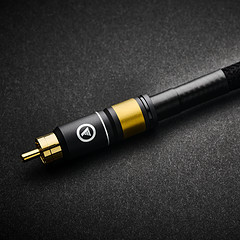 RCA Digital C-MARC™
Cotton-clad unique Litz design • Made only by LessLoss
From
$
510
RCA Digital C-MARC™
Cotton-clad unique Litz design • Made only by LessLoss
From
$
510
-
 RCA Digital C-MARC™ Entropic Process
Possibly the most subtle digital cable on the planet
From
$
858
RCA Digital C-MARC™ Entropic Process
Possibly the most subtle digital cable on the planet
From
$
858
-
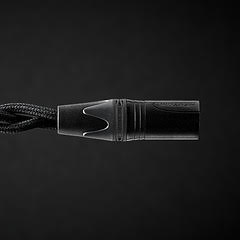 XLR Digital C-MARC™
Featuring a whopping 3 x 2.3mm2 Litz construction
From
$
570
XLR Digital C-MARC™
Featuring a whopping 3 x 2.3mm2 Litz construction
From
$
570
-
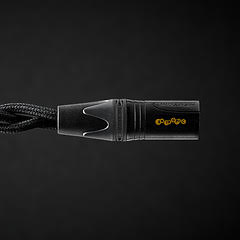 XLR Digital C-MARC™ Entropic Process
Stratospheric performance for the audio connoisseur
From
$
969
XLR Digital C-MARC™ Entropic Process
Stratospheric performance for the audio connoisseur
From
$
969
-
- Grounding Cables
- Bulk Wire and Cable
- Signal Conditioners
-
 Firewall for Loudspeakers
Firewall for Loudspeakers
C-MARC™ Plug-and-Play Speaker signal conditioning like you've never imagined From $ 1656 -
 Firewall for Loudspeakers
Firewall for Loudspeakers
DIY version for Self-Installation For the Do-It-Yourself project enthusiast • Solder yourself From $ 800 -
 BlackGround DIY
Voltage-ground interface for a variety of applications
From
$
446
BlackGround DIY
Voltage-ground interface for a variety of applications
From
$
446
-
 BlackGround 8x/10x Speaker Base
Plug-and-play loudspeaker signal conditioner
From
$
3096
BlackGround 8x/10x Speaker Base
Plug-and-play loudspeaker signal conditioner
From
$
3096
-
- Power Conditioners
-
 Firewall 640x
Plug-and-play solution for any powered gear
Firewall 640x
Plug-and-play solution for any powered gear
C-MARC™ Entropic Process and standard lead versions From $ 654 -
 Firewall 640x DIY for Self-Installation
Self-solder and save!
From
$
320
Firewall 640x DIY for Self-Installation
Self-solder and save!
From
$
320
-
 BlackGround DIY
Voltage-ground interface for a variety of applications
From
$
446
BlackGround DIY
Voltage-ground interface for a variety of applications
From
$
446
-
 BlackGround 6x/10x Power Base
Plug-and-play power conditioner
From
$
2350
BlackGround 6x/10x Power Base
Plug-and-play power conditioner
From
$
2350
-
- Power Distributors
- Equipment Feet
- Field Conditioner
- DACs
- Power Cables
- Reviews
- This is definitely the cable to go for. It will almost literally blow your mind. – March 2012, Puresound Magazine
-
I was intrigued by the unanimously positive reviews garnered by these products ...
– by user Raymond Eye
Leaves you speechless
Sensational cables
BEST purchase I've made
Top notch performance
It's a steal
Musical... liquid... 3D
It's not subtle
More than an upgrade
Best I've heard so far
Stellar service
Sounds like a new system
Much more lifelike
Emotional flow
Overwhelming results
More dimensional
Sound is transformative
We were all astounded
Transformed my listening
Sounds so cohesive
Emotionally engaging
- Where to Start
- Free Newsletter
- Newsletter Archive
- B-Stock Alerts
- Shopping Tools
-
Shipping
- Free Shipping Learn about our international shipping policy
-
Return Options
Our satisfaction guarantee
and return policy -
Customs
UPS expedites local
customs clearance
-
Transaction
- Conditions of Sale Agreement for a smooth business transaction
- Privacy Policy We pledge to keep your information private
-
Terms of Use
Business policies
and agreements
-
Account
-
- Contact Us
-
Meet the Designers
-
- Care to share of your personal experience with our products? We'd be happy to post it!
- Want to learn more about our activities? Our Newsletter is both free and spam-free.
hi-res photos, brochures
logos, press releases, and
print-friendly PDF downloads. -
Contact Us
Connect with Us
-
